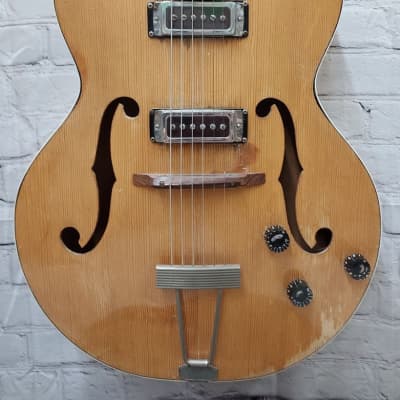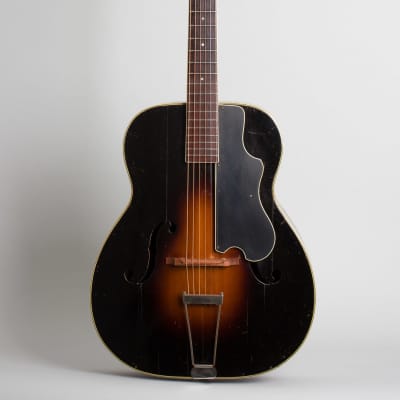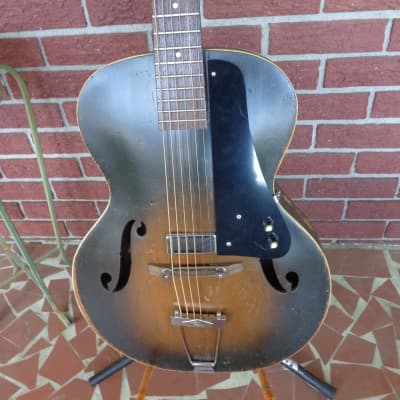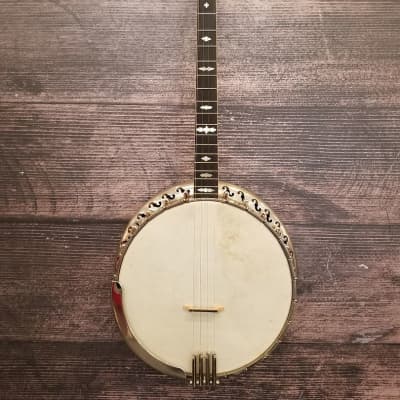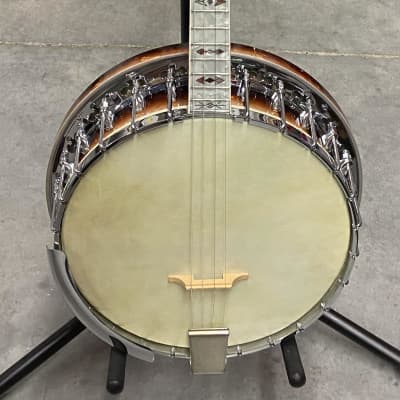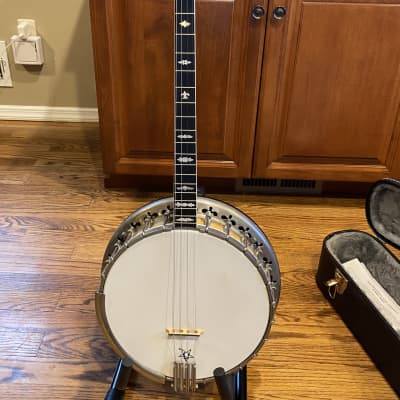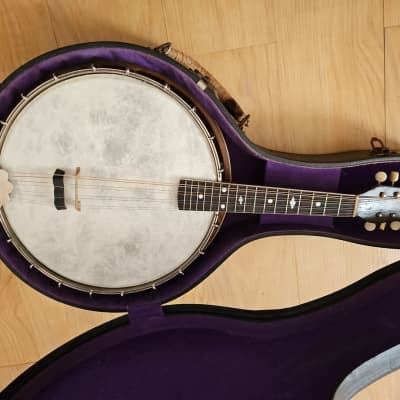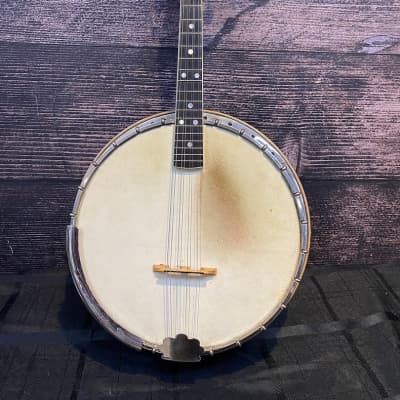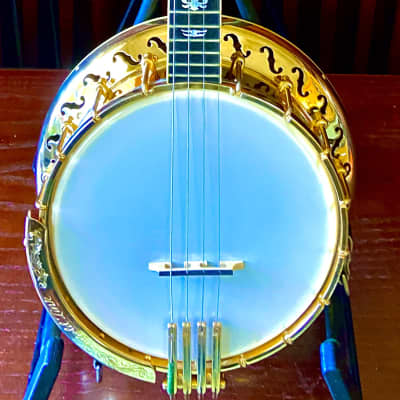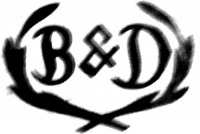

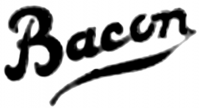
product types:
- banjos
- mandolins
- ukuleles
- acoustic guitars
Information:
Fredrick J. Bacon was born Vermont and soon developed a reputation as a master banjoist in demand for concerts, teaching and instrument endorsements. In 1906 he founded the Bacon Banjo Company with aim of developing novel banjos designs to be made by builders like Vega. These early banjos were typically 5-strings inlaid with “Bacon” on the headstock and with unusual tone chambers with open backs and f-holes on the bottom of the rims.
Bacon decided to open his own factory - unhappy with the inherent problems of not having control over manufacture. In 1921 the factory opened in 169 Thames Street, Groton, Connecticut and in 1922 he was joined in his venture by veteran banjo, guitar and mandolin designer David L. Day (who had previously worked for Vega).
The popularity of the banjo really took off in the 1920s and Bacon & Day were considered the best with their exceptional volume and cutting power and beautiful craftsmanship. Most B&D banjos made during the 1920s and 1930s were 4 string tenors and plectrums - suited to the traditional jazz music of the time. The Bacon & Day Silver Bell line of banjos was introduced in 1923, which to this day is considered unsurpassed by many plectrum players.
The Great Depression of 1929 hit B&D sales. The banjo market also suffered due to the change in musical tastes. B&D focused on guitars and mandolins. But the sales of mandolins were also in decline and B&D were not tooled up to make guitars themselves, instead choosing to rely on OEM makers like Regal. In 1938 a hurricane destroyed the B&D Groton factory, which was not adequately insured. By this stage David L. Day was 73 years old and presumably had had enough. The B&D business was eventually sold to the Gretsch Company in 1939.
